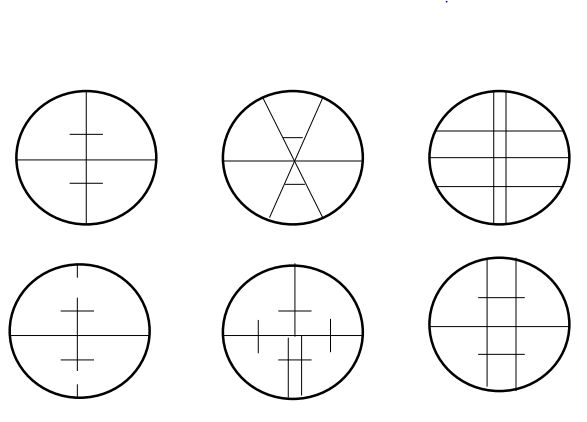A transit theodolite fitted with special stadia diaphragm is known as tacheometer. It is the main instrument of tacheometric surveying. Its telescope contains two horizontal hairs called stadia hairs in addition to the regular crosshairs. The stadia hairs are equidistant from the central cross-hairs and they are specially termed as stadia lines or stadia webs. The common types of stadia diaphragms are shown below:

In general, the telescopes used in stadia surveying are of three kinds:
- The simple external-focusing telescope which is also known as the stadia theodolite
- The external-focusing anallatic telescope (Porro’s telescope). This is usually known as the tacheometer
- The internal-focusing telescope
The second type has advantages over first and third kind because of zero additive constants of the instrument (more of constants will be discussed in the latter sections)
Major Features of Techeometer
A tacheometer must essentially incorporate the following features:
- The multiplying constant should have a nominal value of 100 and the error contained in this value should not exceed 1 in 1000.
- The axial horizontal line should be equidistant from the upper and lower stadia hairs.
- The telescope should be anallactic which means the additive constant should be zero.
- The telescope should be powerful magnification property.

